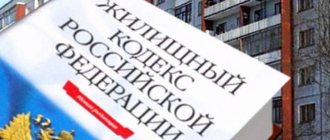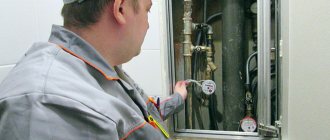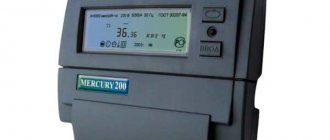How do two-tariff electricity meters work?
The principle of operation of a two-tariff meter is no different from the usual single-tariff one. The current and voltage are measured, and based on these data, the amount of energy consumed over the period is calculated. The difference lies in the ability of the device to remember and summarize the amount of energy consumed in two time intervals (night and day).
It is extremely difficult to implement such a scheme using mechanical counters. Therefore, all manufacturers of two-tariff metering devices produce exclusively electronic models.
Each device is equipped with a digital display that displays the current values of consumed volumes. Most often, the symbol T1 is used to designate the day zone, and T2 for the night zone. In addition, most models are able to display the total amount consumed since the beginning of the current month. It is designated by the symbol T without any indices. In fact, this total corresponds to the value that would be reflected by a single-tariff meter. It has no practical meaning, since payment calculations are carried out for each tariff zone separately.
Multi-tariff meters have a built-in clock
The meter has a non-volatile memory that stores the amount of energy consumed. In this case, separate accounting of accumulated values is maintained for each of the tariff zones.
Two-tariff electricity meter: advantages and benefits of use
In both private and multi-apartment residential buildings, electricity consumption varies significantly depending on the time of day.
Minimum consumption occurs at night when everyone is sleeping. When morning comes, people begin to prepare for the working day and actively use household electrical appliances. Microwave ovens, electric kettles, irons, lighting, etc. have significant power, which leads to a sharp increase in the load on the electrical grid. This phenomenon is commonly called the morning peak load. As a rule, the morning peak lasts from 7-00 to 10-00.
After 10-00, when people leave for work, consumption decreases and remains almost at the same level until the evening. The maximum peak load (maximum hours) is the period from 18-00 to 23-00. Residents who have returned home are actively using household appliances, which is causing an increase in electricity consumption.
In connection with these features, energy supply companies began to apply the practice of introducing multi-tariff metering. The day rate is valid from 7-00 to 23-00, the night rate is used from 23-00 to 7-00.
Such differentiation allows you to set a different cost per kilowatt-hour for each tariff zone. The day rate is more expensive, the night rate is cheaper. This motivates people to use powerful electrical appliances at night, when energy costs are lower.
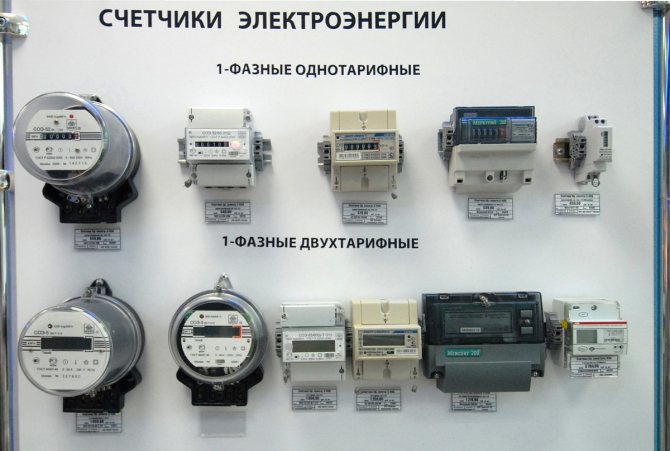
Types of electricity meters
Accordingly, all you need to do is switch to a two-tariff power supply scheme, replace the meter and get significant savings. The approximate amount of savings can be calculated by analyzing the expenses of a conventional household in one of the regions of our country.
Let’s say that in one month, according to the daytime tariff T1, 50 kW*h were used at a cost of 6.51 rubles/kWh, and at night – 100 kW*h, costing 2.32 rubles/kWh.
Then the costs will be:
- during the day (T1) 50*6.51=25.50 rub;
- at night (T2) 100*2.32=232.00 rub;
- total: 325.50+232.00=557.50 rub.
Accordingly, a month of using electricity with a two-tariff meter will cost 557.50 rubles. In the case of using a single-tariff scheme, the cost of kWh is 5.66 rubles/kWh. Monthly expenses for the same consumed volume of 150 kWh would be 5.66 * 150 = 849 rubles.
Thus, the savings due to the installation of a two-tariff meter were:
849-557.50=291.50 rub.
However, you must also take into account the cost of the meter, as well as the installation costs. The average price of a two-tariff meter is 2,200 rubles. Its installation will cost approximately 800 rubles, total costs: 2200 + rubles = 3000 rubles.
If the proportions of energy consumption are maintained between day and night tariffs, the payback period will be:
3000/291.50=10.29 months.
This means that after 11 months all expenses will be fully compensated.
Video - Is switching to a two-tariff electricity meter profitable?
Prices for single-phase two-tariff electronic meters
Single-phase two-tariff electronic meter
The principle of removing and calculating consumed energy
A two-tariff meter is a modern element of electricity metering that is capable of showing and recording not only the amount of energy spent, but also other network parameters. In order to find out how much electricity was consumed during a given period, you need to press the buttons on the metering device and go to the display mode, where you can see data on the day and night use of electrical equipment. Knowing how many kilowatts were spent during the day and, accordingly, at night, you can find out how much energy was taken from the network per day, per month, per week, and so on. To do this, the recorded difference is multiplied by the day or night tariff, which may differ depending on the region where the consumer is located.
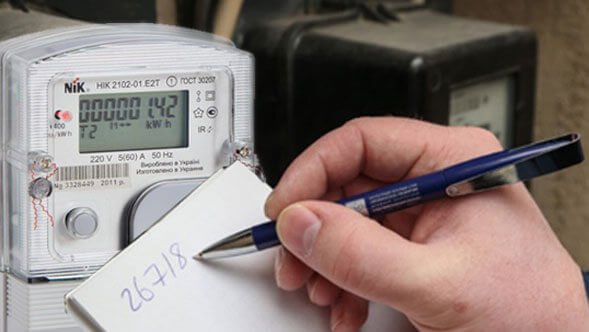
The video below clearly shows the initial setup of a multi-tariff electric meter using the CE102M R5 model as an example:
Of course, this form of accounting has its enormous advantages and is quite beneficial for the consumer, who, for example, can transfer some of his work to the night, since modern devices are programmed and turn on automatically at the right time. However, if only a refrigerator and lighting are included in the network, then you need to think about the effectiveness of the two-tariff mode of payment and accounting, and calculate how long it will take to pay off all the costs of new equipment and electrician services. We hope it has become clear to you how to connect a two-tariff electricity meter in a 220 and 380 Volt network. If you have any questions, you can ask them in the comments below the article.
It will be useful to read:
- Advantages and disadvantages of two-tariff meters
- Who should pay for the replacement of the electric meter?
- How to save energy at home
Like 0) Dislike 0)
Who benefits from installing a two-tariff meter?
The two-tariff accounting system, as practice shows, turns out to be beneficial for both the population and resource supply organizations. The former receive savings on electricity bills, the latter – a more uniform load on the network. In addition, the daily tariff is always slightly more expensive than with a single-tariff supply scheme. This largely offsets the reduction in charges for electricity consumed at night.
However, a widespread transition to a two-tariff supply scheme has not been observed. There may be many reasons for this, but the main two are:
- people are scared off by the prospect of completing paperwork to switch to a two-tariff scheme. Not everyone understands the significance of this or that document required to be submitted to the energy sales company. Additionally, the procedure may take some time and require multiple visits. And few people can boast of having a large amount of free time;
- On the Internet and in personal communication you can find numerous reviews of people who have already installed a two-tariff meter. Allegedly, such a scheme either does not provide any opportunity to save money, or the payback period is excessively long.
In the latter case, it is necessary to take into account that in different regions the difference between the values of daytime and nighttime tariffs can be quite significant. Thus, in the capital one can observe an almost threefold difference. Accordingly, the two-tariff system will allow achieving tangible savings. In the outback, this difference may turn out to be much more modest. Spending time on re-issuing documents and money on replacing the meter can take an unacceptably long time to pay off.
Video - Basic mistakes when choosing an electric meter
Therefore, it is advisable to calculate in advance the economic effect of changing the tariff plan.
With each increase in energy tariffs, the relevance of the problem of energy efficiency and energy saving increases. As one of the measures to save on electricity costs, the installation of an electric energy meter with the possibility of multi-tariff metering is presented. Will such a counter really help you save money? Let's try to figure it out...
Electricity consumption in residential buildings is subject to significant daily changes. Naturally, at night consumption is minimal - everyone is sleeping. In the morning, consumption increases as people get ready for work. In the evening, consumption increases even more, people come home from work, and it gets dark outside. Such fluctuations in electrical energy consumption cause significant inconvenience to power engineers and force them to have a power reserve to withstand peak consumption.
Therefore, the introduction of multi-tariff accounting seems quite reasonable. If you can change your routine so that you don't put a strain on the electrical grid during peak hours, you could save money during off-peak hours.
And everything would have been very simple if the electricity tariff at night was simply lower than during the day. In this case, installing a multi-tariff meter would certainly be beneficial. The payback period in this case would depend on the difference in tariffs, the profile of electricity consumption, the cost of the meter and the work on its installation.
But cunning energy companies have set a trap here too. The day zone tariff in the case of multi-tariff metering is higher than a simple single-rate tariff. How can you save money in this case?
Will a multi-tariff meter help you save money?
First, let's look at a two-tariff meter. Such meters divide the day into two zones - “day” and “night”. The day zone usually lasts from 7:00 to 23:00, and the night zone from 23:00 to 7:00. How to calculate the savings from installing such a meter?
Let’s assume that the single-rate tariff is 3 rubles per kWh, the daytime tariff is 3 rubles 30 kopecks per kWh, the night tariff is 1 ruble 80 kopecks per kWh.
It turns out that with two-tariff metering for one daily kW-hour you overpay 30 kopecks compared to a single-rate tariff. But for one night kWh you save 1 ruble 20 kopecks. For equal profitability (more precisely, equal consumption), it is necessary that for one night-time kilowatt there should be no more than 4 daytime ones. With a smaller ratio there will be savings, with a larger ratio there will be overspending.
Thus, the nightly consumption should be 1 / (1 + 4) = 0.2, that is, at least 20% of the total consumption. If you plug in your numbers, you will get your nightly consumption threshold .
For example, in Moscow now the single-rate tariff is 4.50 rubles/kWh, the day zone is 4.53 rubles/kWh, the night zone is 1.16 rubles/kWh. The night consumption threshold is:
1 / (1 + (4.50 - 1.16) / (4.53 - 4.50)) = 0.009 or 0.9%.
The two-part tariff for Moscow residents is certainly beneficial. This small nightly consumption can easily be provided by the refrigerator.
But for the Rostov region, where the single-rate tariff is 3.23 rubles/kWh, the day zone tariff is 3.43 rubles/kWh, and the night zone is 2.68 rubles/kWh, the equal consumption threshold is already:
1 / (1 + (3.23 - 2.68) / (3.43 - 3.23)) = 0.27 or 27%.
This calculated threshold for night consumption of 26-31% is typical for almost all regions of Russia. Why? Because according to statistics from energy sales companies, exactly 25-30% of all electricity is consumed at night. And while we are considering how to save, energy sales planners are considering what zone tariff to set so as not to lose anything.
For three-tariff meters, the day is divided into three zones: the night zone usually lasts from 23:00 to 7:00, the semi-peak zone from 10:00 to 17:00 and from 21:00 to 23:00 and the peak zone from 7:00 to 10 :00 and from 17:00 to 21:00.
Here the calculations would be much more complicated if the energy supply organizations had not given us a “gift”. The night zone tariff for three-tariff metering is usually equal to the night zone tariff for two-tariff metering, and the half-peak tariff is the usual single-rate tariff. That is, the half-peak zone can simply be excluded from the calculation and the consumption threshold can be set in the peak zone in relation to the nighttime. Then you can simply divide the overpayment for one kW-hour in the peak zone by the savings per kW-hour at night.
For the Rostov region with a peak zone tariff of 3.58 rubles/kWh, half-peak – 3.23 rubles/kWh and night – 2.68 rubles/kWh for equal consumption of three-tariff and single-tariff meters, night consumption should be at least:
(3.58 - 3.23) / (3.23 - 2.68)) = 0.64 or 64%
from consumption in peak zones. Naturally, these tariffs are calculated based on the average electricity consumption schedule.
Thus, the average consumer will not gain anything when installing a two-tariff or three-tariff electricity meter . But whether you can benefit is the next question.
How to save on a multi-tariff meter?
The most accurate way to find out whether it makes sense to switch to multi-tariff metering is to take an energy consumption profile . If you want to install a two-tariff meter, then all you need to do is record the readings of the electric meter at 7:00 and at 23:00. For a three-rate tariff, this must be done at 7:00, 10:00, 17:00, 21:00 and 23:00. And so on for a month. After this, it will be possible to calculate consumption for all zones and find out the profitability of replacement.
Naturally, few will dare to undertake such a study. Therefore, you can go by reasoning. If you are an ordinary average Russian who works from 8:00 to 17:00, and your apartment does not have a large number of “smart” household appliances that can work according to a given schedule, then you definitely do not need a multi-tariff meter . On the contrary, when you install it, you may even get an increase in your electricity bills.
The presence of household appliances (washing machine, dishwasher, bread maker, boiler and other powerful electrical appliances), and most importantly, the ability and desire to turn everything on exclusively at night can provide some savings. At the same time, keep in mind that constantly jumping up at night to check the operation of electrical appliances is fraught with a disrupted circadian rhythm, insomnia and other health problems. Leaving equipment unattended can lead to a fire or flood. And noisy household appliances (washing machine) are quite capable of leading to a scandal with the neighbors.
Is all this worth the savings? Let's count. Let's say that the average apartment consumes 300 kWh per month. With some effort it was possible to achieve 50% of the nightly intake. Believe me, this is a very good result, requiring a radical change in established habits. For the Rostov region, monthly savings will be:
300*3.23 – (150*3.43 + 150*2.68) = 52 rubles 50 kopecks
A simple two-tariff meter costs about 1,500 rubles. The payback period for the meter is about two and a half years. There is one more trap - if there are any changes in electricity metering or time accounting (change of boundaries for dividing time zones day/night, introduction/cancellation of clock hands), such meters need to be reprogrammed, which costs about 400-500 rubles and again delays the desired savings by almost a year. There is also no doubt that if there is a significant change in the profile of electricity consumption, tariffs, and, consequently, the threshold for night consumption, will be adjusted. Naturally, you should not forget about regularly checking the meter.
Therefore, if for some reason you install a new meter (new building, out of order, expired service life), then you can choose a multi-tariff one . It can provide some microscopic savings for the average person. As a last resort, you can reprogram such a counter and switch to regular single-rate accounting.
Changing an existing single-tariff meter to a multi-tariff meter is beneficial only if the apartment or house has powerful consumers that operate around the clock or mainly at night (electric heating and air conditioning, night lighting of a large yard, water or sewer pumps).
By the way, the correspondents of Perm Television came to the same conclusion; you can watch the report on video.
We recommend reading
- Old gas water heater. How to use?
- Operating instructions for geyser TermaQ G-19-01
- How to regenerate a water filter?
- How to choose a water filter?
- Restoring the IconBit NetTAB MATRIX HD tablet
- Operating instructions for the gas water heater Neva-3208
- How to choose a juicer?
- Repair of juicer SV-1
- How to check an electric meter at home?
- How to connect a second TV? As easy as pie!
What documents are required to install a two-tariff meter?
To switch to a two-tariff power supply scheme and install the appropriate meter, you will need to present the following documents to your local energy supply company:
- Passport of a citizen of the Russian Federation.
- The current electricity supply contract. After the supply is transferred to a two-tariff scheme, this agreement will be re-concluded.
- Documents of title for the premises where the new meter will be located (Certificate of Ownership).
- Statement.
The last document is filled out directly at the energy sales company. There you can also get a blank form, look at a sample of an already completed application, and, if necessary, get clarification from a specialist.

To install a meter, you must contact your local energy supply company.
Application forms for installing or replacing a meter:
- application for installation of a metering device;
- application for replacement of an individual metering device;
- application for commissioning of an individual metering device.
How to install a two-tariff meter
The process of switching to a two-tariff electricity metering system in practice is not as complicated as it might seem at first glance. The sequence of actions will be as follows:
- collect a package of documents and provide them to the sales company;
- After receiving the order to replace (install) the electric meter, purchase this metering device. The most reliable way to do this is directly with the energy supply organization. Another option is to visit a specialized store. This is guaranteed to eliminate potential problems with registering the device;
- call a specialist to replace the old meter with a two-tariff one.
The actual installation takes a minimum of time. With the help of specialists, the old meter will be removed, the new one will be installed, configured and sealed. A corresponding note will be made in the technical passport for the metering device.
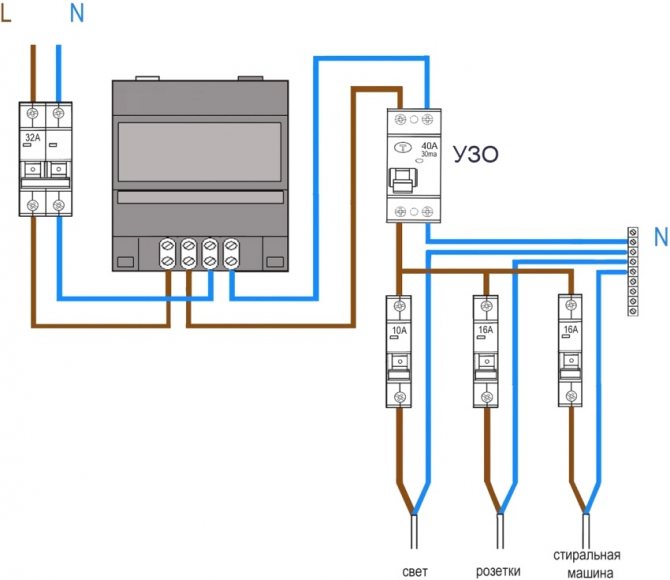
Connection diagram for an electricity meter using an RCD
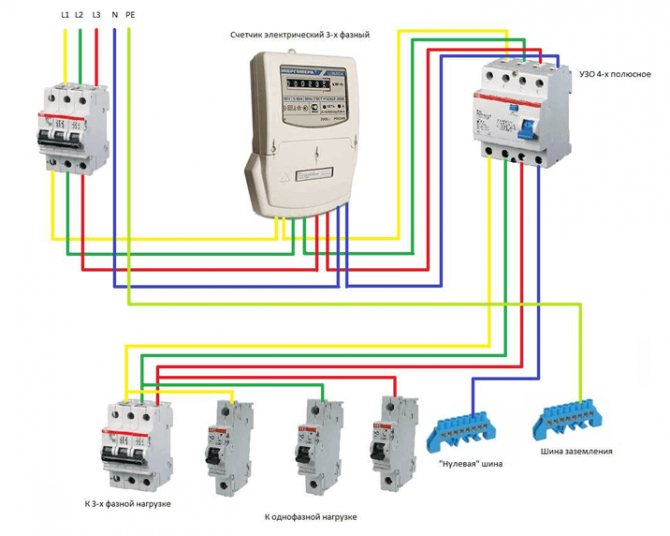
Connection diagram for a three-phase two-tariff electric meter
After installing the meter, it is advisable to obtain detailed instructions from a specialist on the main aspects of operating the meter: how to take readings, what the additional symbols on the device screen mean, as well as where and how often to carry out verification.
Video - Installation, connection and initial configuration of a multi-tariff meter
Connection diagram for a two-tariff electric meter
The connection and installation of a two-tariff electricity meter should be carried out only by specialists who have permission to work in electrical installations and an electrical safety group of at least third. In order to install and then connect the meter with your own hands, you must understand the danger of electric shock.
Double-tariff meters, like single-tariff meters, can be designed for different network voltages:
- 220 Volt is a single-phase network, that is, a phase and a zero are used;
- 380 Volts - three-phase voltage, the connection has three phases.
Their connection diagrams are basically identical, only they differ in the number of terminals for connection and, as a result, the corresponding protective and switching equipment designed for the mains voltage. For an apartment, 220 V is most often typical, and for a private house, 380 V may be acceptable if equipment with three-phase asynchronous motors is connected. A feature of some three-phase meters is the ability to use them for single-phase networks.
Here is the connection diagram for a single-phase two-tariff electricity meter:
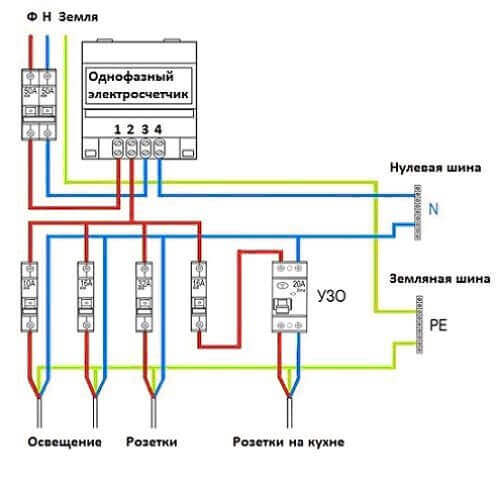
The presence of grounding is not mandatory here, but it is still recommended to organize it, since even the most modern residual current device cannot provide reliable protection against electric shock during a breakdown. Very often, work is carried out when voltage is already present at the upper terminals of the input circuit breaker, so before proceeding directly to the connection, it is worth turning off the voltage and checking its absence on the current-carrying parts on which work will be carried out.
The connection diagram for a three-phase two-tariff electric meter looks like this:
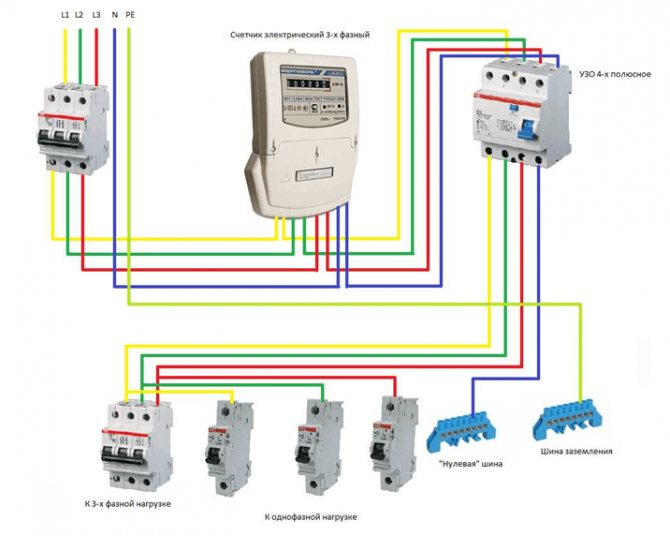
The safety rules and connection principle are similar to the previous diagram. If the consumer’s network is powerful and the load current is greater than the meter can pass through itself, then the connection occurs through a current transformer. Almost all electric meters are designed for current from 5 to 50 Amps. For high-voltage circuits in production, such transformers are mandatory, since with their help they not only keep track of consumed electricity, but also protect electrical equipment from emergency conditions.
The video below clearly shows the connection of a single-phase and three-phase electric meter to the network:
Which metering device is better to choose for a residential premises?
At the time of purchasing a two-tariff meter, you should study the documentation for it and make sure that it complies with GOST. There must also be an indication that the model is included in the State Register (i.e. there is permission for operation on the territory of the Russian Federation).
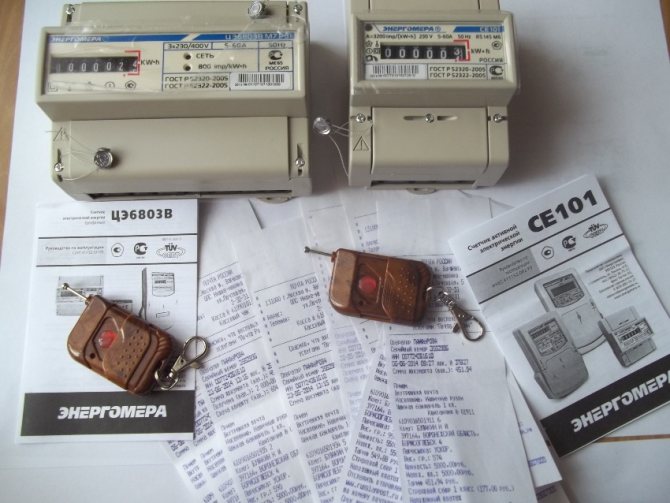
When purchasing a two-tariff meter, you should study the documentation for it
The technical passport must contain the factory serial number of the electric meter, production date, calibration interval and warranty period. The serial number in the passport must match that printed directly on the meter itself. Particular attention should be paid to the safety of the seals on the case, as well as the integrity of the meter body itself. The equipment must correspond to that stated in the instruction manual.
From the technical characteristics you need to pay attention to the following:
- Accuracy class. As a rule, modern models of two-tariff electric meters comply with current requirements. The accuracy class is indicated both on the device itself and in the technical data sheet. The minimum accuracy class can be clarified with the energy sales company.
- Number of phases.
- Mounting method: on racks or rails.
- Functionality. The simplest models have only a one-line display and a minimum of controls. More advanced ones may have a display with rich graphics, and can also display the values of power consumption, current or voltage in the network.
Video - Which electric meter to choose for your home
As practice shows, inexpensive models with modest functionality often have the same degree of reliability as their more expensive counterparts.


